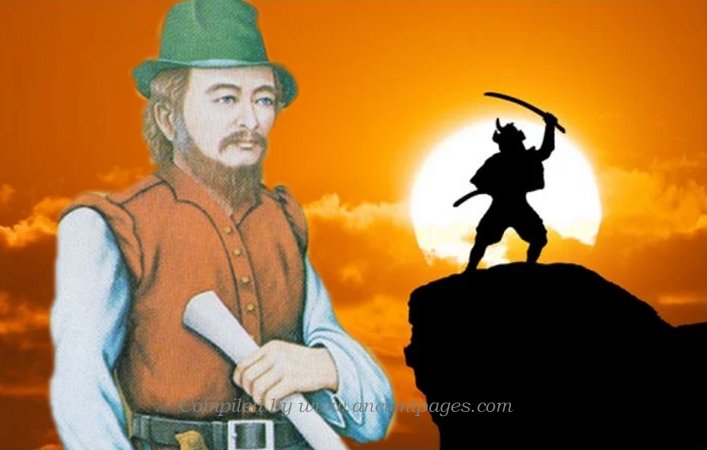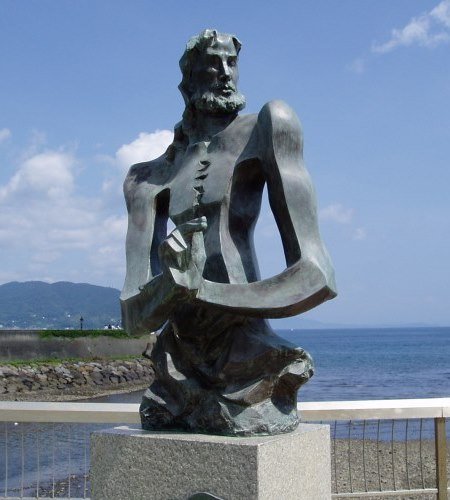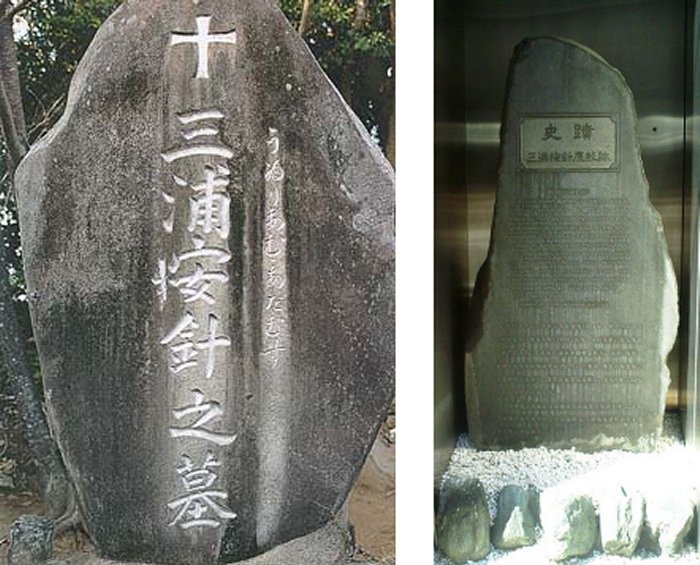William Adams: The Journey To Becoming The First White Samurai
David Tee - AncientPages.com - William Adams was born in Elizabethan England in the 16th century and grew up working as an apprentice to shipbuilders. For the first years of his life, he spent either learning how to build ships or sailing them. Between trips, he married his first wife and they had two daughters together.
The Beginning Of The Journey
While he became the first white man to become a Samurai, he was definitely not the first white man to travel to Japan. Portuguese missionaries traveled to the country to spread the Catholic faith and trade in Japanese slaves.
In 1598, William Adams was hired by Dutch traders to guide a fleet consisting of 5 ships and help them get to Japan. At the time travel to Japan was limited to only the Spanish and the Portuguese. The Dutch wanted to break that monopoly.
Over the course of two years, 4 of the five ships were lost to a variety of storms, angry natives, and European competitors. One ship with Adams and 23 other crew members arrived in Japan. But only Adams was healthy enough to negotiate and communicate with the Japanese.
Because both the Spanish and Portuguese guarded their connection to the Japanese, not much was known about the people of the country in England or Holland. What was known came mostly from the traveler Marco Polo.
Giles Milton wrote that all the information about the Japanese held outside of Spain and Portugal came from Marco Polo, who had never visited Japan. His information came from the Chinese, who described the Japanese as civilized, well-favored, very independent, and proud people. They did not rely on anyone else.
Marco Polo also noted that no one ever traveled to Japan because of the distance and the dangers involved. The lack of information did not dissuade anyone from thinking about the country. With little information to go on, many Europeans felt that these types of forbidden kingdoms held wealth untold.
Marco Polo did not help stop those thoughts. Instead, he helped fuel them by his descriptions of golden roofed palaces and other details exaggerating the wealth of the Japanese.
William Adam's New Life In Japan As A White Samurai
The Portuguese missionaries and traders did not like the arrival of Adams who impressed the head of the local shogunate, Tokugawa Ieyasu. They declared that Adams was a heretic and a pirate then demanded that he be executed. Instead, Tokugawa Ieyasu made Adams an adviser.
Statue of William Adams (1564-1520) in Nagisacho, Japan. Credit: Public Domain - CC BY-SA 3.0
William Adams not only advised the Japanese leader but also directed the building of an 8-ton European-style boat. He became a tutor in geography, navigation, and geometry and worked as an adviser on international issues, negotiating with the Dutch and Spanish Philippines.
It took years for Adams to finally reach the position of Samurai, but he was not forced to become a Samurai. That elevation took place as a reward for his dedicated service and contribution to the Japanese shogunate.
William Adams received land in Miura Henmi part of Sagami province, along with 80 servants. This gift contained about 100 farms. He was also given a mansion n Edo as thanks for his service to the shogunate.
Along with all the physical rewards, Adams was given a new name. He was called Miura Anji. The word anjin means pilot, which he was to some extent. In 1605, while still married to his first wife, Adams married a Japanese lady and had two more children with her.
He also kept a concubine and had one child with her.
Becoming a Samurai is not the same as becoming a Ninja warrior. The Ninja is a profession and not a status of class in Japanese society. To be a Ninja one must train hard and work years as a warrior honing their skills.
In pre-16th century days, the Samurais were skilled warriors whose equivalent would be the knights of old Europe. They held land, fought for a king or a lord, and trained for years to master the art of warfare.
By the 16th century, though, the Samurai evolved into becoming political leaders who managed large areas of land and people. A Samurai is now a class in Japanese society, one does not have to train. They merely have to be appointed, as Adams was.
William Adam's Legacy
The arrival in Japan was not an act of misfortune for William Adams. What was a difficult, treacherous journey turned out to be something of a silver lining for him? His knowledge, abilities, and dedication served him well leading him to be favored over the remaining crew members.
Because the local shogunate took a liking to Adams, he was given opportunities that were withheld from other Europeans who visited the country before, during, and after his lifetime.
Samurai - Powerful Skilled Warriors Who Loved Music, Art And Poetry - Read more
It is said that he was the Englishman who opened up Japan. This may be an honor that can be debated but that is his legacy. His trading adventures took him to different parts of the Orient including Siam, Vietnam, and other countries in the geographical region.
He also helped other Europeans get established in the country, including the first head of the London Merchants Company’s Japanese office.
At one point, around 1612, Adams wanted to return to England. He made his request to his shogunate but was refused. The leader of the Japanese shogunate felt that Adams still had a useful purpose to serve in the country and did not want him to leave.
Left: Grave of Miura Anjin, Hirado, Nagasaki Prefecture, Japan - Right: The monument to William Adams at the location of his former Tokyo townhouse, in Anjin-cho, today Nihonbashi Muromachi 1-10-8, Tokyo. Credit: Public Domain
When new trading opportunities opened up, the thought of making more money deterred Adams from making the request a second time. He finally received permission to leave Japan, but his business interests kept him tied to the country.
He died in 1620, never seeing England or his first family again. He is said to be buried in Japan, but the location of his grave is in doubt.
Updated on March 30, 2024
Written by – David Tee AncientPages.com Staff Writer
Copyright © AncientPages.com All rights reserved. This material may not be published, broadcast, rewritten or redistributed in whole or part without the express written permission of AncientPages.com
Expand for referencesReferences:
Samurai Adams: The Englishman who opened Japan by Giles Milton
More From Ancient Pages
-
 Rock Stars: How A Group Of Scientists In South Africa Rescued A Rare 500 Kg Chunk Of Human History
Featured Stories | Oct 20, 2022
Rock Stars: How A Group Of Scientists In South Africa Rescued A Rare 500 Kg Chunk Of Human History
Featured Stories | Oct 20, 2022 -
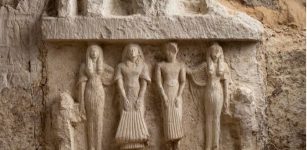 Impressive Ancient Underground Tombs And Chapels Unearthed In Saqqara, Egypt
Archaeology | Apr 16, 2023
Impressive Ancient Underground Tombs And Chapels Unearthed In Saqqara, Egypt
Archaeology | Apr 16, 2023 -
 Evidence Of Cosmic Catastrophe 12,800 Years Ago – Earth Collided With Fragments Of A Comet
Archaeology | Feb 2, 2018
Evidence Of Cosmic Catastrophe 12,800 Years Ago – Earth Collided With Fragments Of A Comet
Archaeology | Feb 2, 2018 -
 Unknown Energy Source Created The Image On The Shroud Of Turin Scientists Suggest
Archaeology | May 12, 2012
Unknown Energy Source Created The Image On The Shroud Of Turin Scientists Suggest
Archaeology | May 12, 2012 -
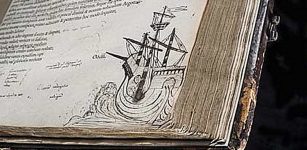 January 2016: Lost Library Of John Dee Revealed In A Special Exhibition
Archaeology | Jan 24, 2016
January 2016: Lost Library Of John Dee Revealed In A Special Exhibition
Archaeology | Jan 24, 2016 -
 Unusual Iron Age Burial With Warrior And Sword Discovered On Gotland, Sweden – Was He From The Roman Empire?
Archaeology | Sep 7, 2021
Unusual Iron Age Burial With Warrior And Sword Discovered On Gotland, Sweden – Was He From The Roman Empire?
Archaeology | Sep 7, 2021 -
 Women’s March On Versailles: One Of The Most Significant Events Of The French Revolution
Ancient History Facts | Oct 11, 2018
Women’s March On Versailles: One Of The Most Significant Events Of The French Revolution
Ancient History Facts | Oct 11, 2018 -
 The First Australians Ate Giant Eggs Of Huge Flightless Birds That Went Excinct Over 47,000 Years Ago
Archaeology | May 25, 2022
The First Australians Ate Giant Eggs Of Huge Flightless Birds That Went Excinct Over 47,000 Years Ago
Archaeology | May 25, 2022 -
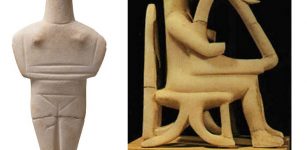 Cycladic Figurines Of Ancient Crete – International Symposium With Scholars From Around The World
News | Sep 25, 2015
Cycladic Figurines Of Ancient Crete – International Symposium With Scholars From Around The World
News | Sep 25, 2015 -
 Ancient Irish Practiced Special Burial Rituals Such As Dismemberment Of Bodies
Archaeology | Sep 18, 2017
Ancient Irish Practiced Special Burial Rituals Such As Dismemberment Of Bodies
Archaeology | Sep 18, 2017 -
 Magical Adder Stone And Its Immense Power
Celtic Mythology | Jul 14, 2018
Magical Adder Stone And Its Immense Power
Celtic Mythology | Jul 14, 2018 -
 Mysterious Deaths Around Empress Cixi – Cruel Tyrant Or Victim Of Propaganda?
Featured Stories | Apr 9, 2018
Mysterious Deaths Around Empress Cixi – Cruel Tyrant Or Victim Of Propaganda?
Featured Stories | Apr 9, 2018 -
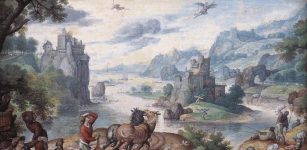 The Ancient ‘Flying Machines’ Of Icarus and Daedalus
Featured Stories | Aug 16, 2014
The Ancient ‘Flying Machines’ Of Icarus and Daedalus
Featured Stories | Aug 16, 2014 -
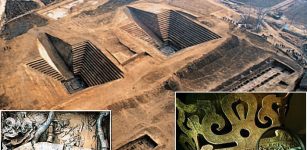 Mysterious Lost Civilization Of Chu And Its Powerful Kingdom
Civilizations | Nov 29, 2018
Mysterious Lost Civilization Of Chu And Its Powerful Kingdom
Civilizations | Nov 29, 2018 -
 Odin: Norse God Of War And Magic – Most Complex Figure Of The Norse Pantheon
Featured Stories | Oct 27, 2016
Odin: Norse God Of War And Magic – Most Complex Figure Of The Norse Pantheon
Featured Stories | Oct 27, 2016 -
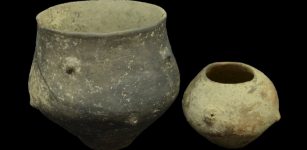 New Insight Into Genetic History And Social Structures In Neolithic And Bronze Age Croatia
Archaeology | Aug 18, 2021
New Insight Into Genetic History And Social Structures In Neolithic And Bronze Age Croatia
Archaeology | Aug 18, 2021 -
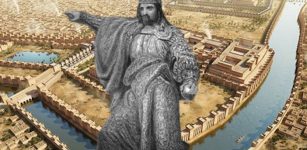 Babylon’s Kiln-Fired Bricks Almost Erased The City From History
Featured Stories | Dec 13, 2018
Babylon’s Kiln-Fired Bricks Almost Erased The City From History
Featured Stories | Dec 13, 2018 -
 Amakuni – Legendary Japanese Blacksmith And Father Of The Samurai Sword
Featured Stories | Jan 23, 2019
Amakuni – Legendary Japanese Blacksmith And Father Of The Samurai Sword
Featured Stories | Jan 23, 2019 -
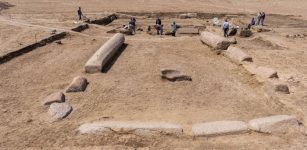 Ancient Temple Dedicated To God Zeus Discovered In Sinai, Egypt
Archaeology | Apr 26, 2022
Ancient Temple Dedicated To God Zeus Discovered In Sinai, Egypt
Archaeology | Apr 26, 2022 -
 1,200-Year-Old Rock-Cut Temple Found On Banks Of Arjuna River,Tamil Nadu, India
Archaeology | Sep 3, 2020
1,200-Year-Old Rock-Cut Temple Found On Banks Of Arjuna River,Tamil Nadu, India
Archaeology | Sep 3, 2020

